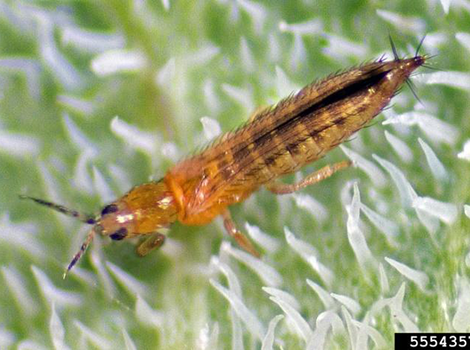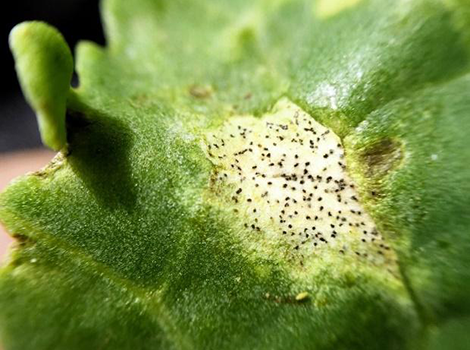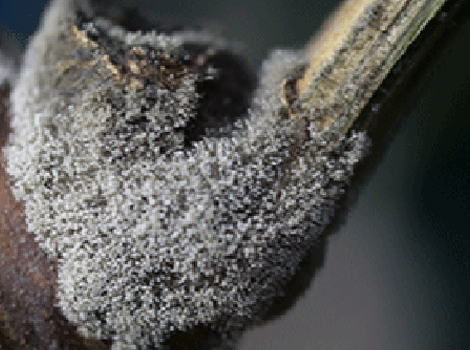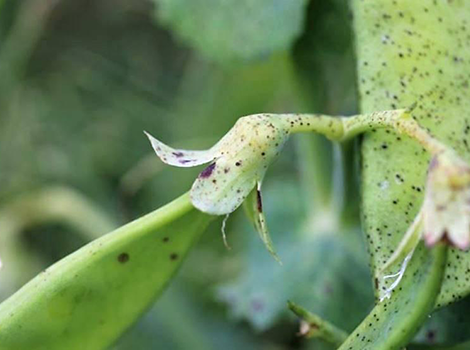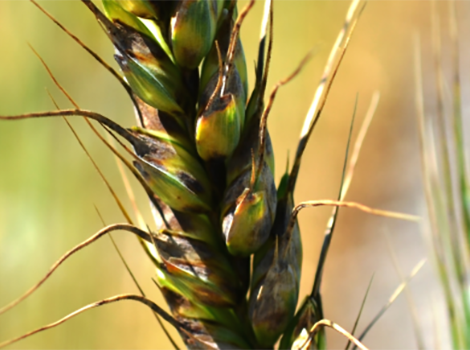The iMapPESTS mobile surveillance prototype, Sentinel 1, completed its second trial at SA’s premier agronomic cropping site, Hart field site, from the 4th of August to the 2nd of November.
Sentinel 1 features one six-metre insect trap, a two-metre insect suction trap and two spore suction traps, as well as an onboard weather station. This site also collects data for targets captured by lure-based traps. Priority pests and pathogens for grains are targeted for identification at this site.
An overview of grains insect pests observed during the trial is presented here by SARDI entomologist, Helen Brodie, Hart field site research & extension manager, Bek Allen and AUSVEG engagement & adoption coordinator for iMapPESTS, Shakira Johnson.

Seasonal conditions at Hart Field Site 2020
The Spring 2020 insect sampling at Hart demonstrated typical insect prevalence during a time when host plants are drying off and many insects are taking flight to seek “greener pastures”. Weather conditions greatly influence how many insects are in the air. The growing season at Hart in 2020 was defined by a dry winter, with relatively warm daily temperatures. These warm and sunny weather conditions, with gentle breezes, almost always result in higher insect captures.
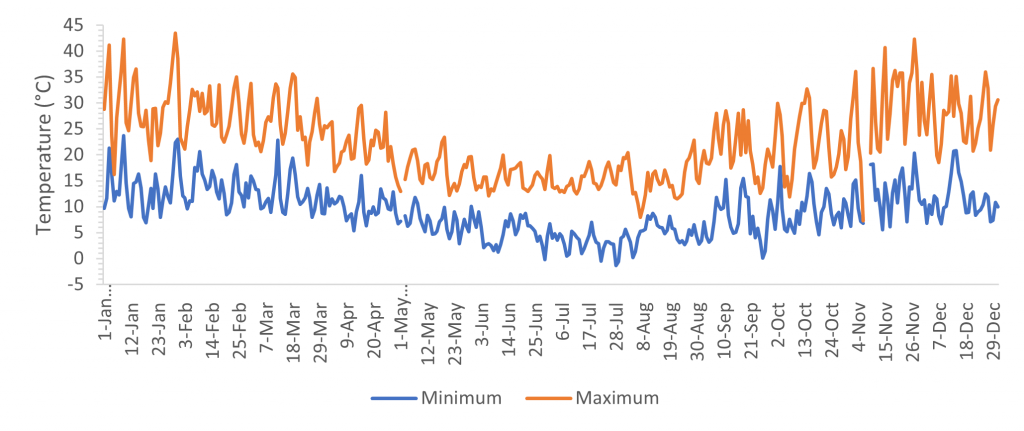
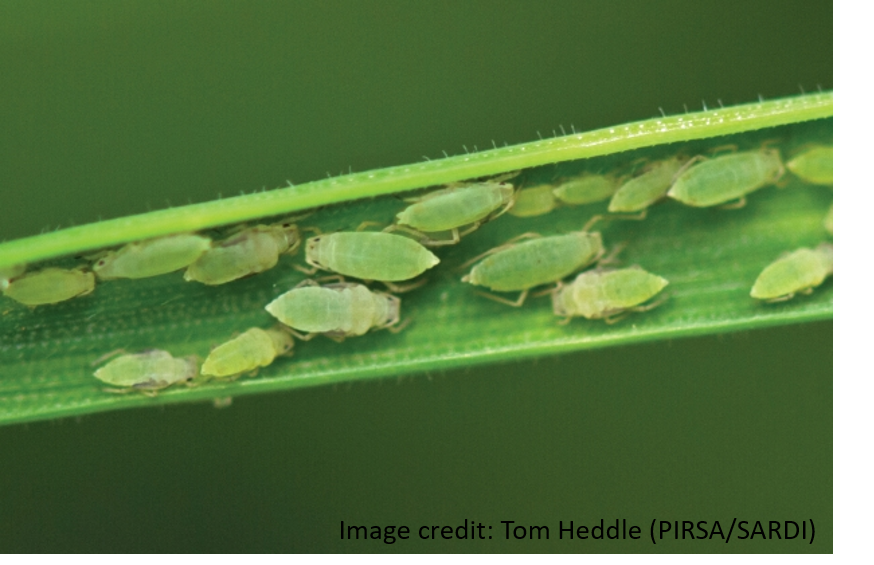
Russian wheat aphid
Russian wheat aphids (RWA) peaked in mid-October at 1173 aphids trapped and since these aphids tend to linger even on cereal plants that seem almost dead, this most likely represents the aphids abandoning roadside barley grass weeds that have died off earlier than crop cereals. Generally, the late-season peak of Russian wheat aphids on the wing occurs in November or even December depending on how quickly conditions dry up.

Low numbers of RWA were spotted at Hart on the 20th of August and were sprayed approximately one week later on the 26th of August. At this time, common visual crop damage consisting of purple streaking and leaf rolling was observed across most wheat crops. Damage was minimal.
In general, pest numbers are monitored on-site and insecticides are applied early when low-moderate numbers are present.
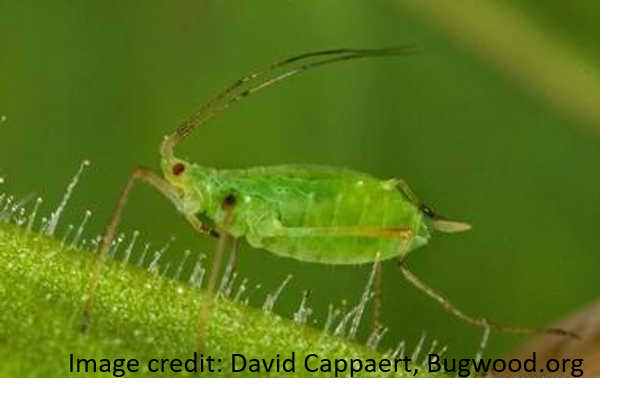
Green peach aphid
Green peach aphids peaked around mid-September coinciding with the time when their preferred canola leafy foliage would be drying, falling off the canola stalks and the plants focussed on ripening their seed pods. These aphids are quick to vacate a senescing or overcrowded host plant and take to the wing for new hosts. Coming into summer, suitable hosts in the area are limited, and aphids will be relying on roadside weeds, home gardens and irrigated crops.

These observations also coincided with applications of insecticides to all pulse crops at Hart during podding on the 29th September. Pulse crops are heavily monitored during this time for all pests including aphids and heliothis larvae. Pending pest pressure, pulses can be sprayed with insecticides every 2-3 weeks, from the start of flowering through to pod development.

Oat and corn aphids
Oat and corn aphids on the wing were in low and staggered numbers across the monitoring period but generally reduced after September. Their appearance in samples strongly reflected the weather conditions of each day. These aphids need fresh plants to maintain colonies and therefore will abandon senescing plants earlier than Russian wheat aphid.
Rose grain aphid is a minor player in this grain growing area and this was reflected by low numbers throughout and no significant peak period.

Western flower thrips and Onion thrips
Western flower thrips (WFT) and onion thrips (OT) made an appearance in the third week of October, with a peak of 154 WFT and 80 OT, but settled down to minimal detection with the period of cooler wetter weather in the following weeks. The six-metre insect suction trap (orange bars) collected thrips at a much higher rate than the two-metre insect suction trap (blue bars).
The two-metre suction trap will generally provide information about the insects in the immediate paddock or property, whereas the taller six-metre suction trap will mostly represent what is happening at a larger (potentially regional) scale. Insects captured from six-metre height are mostly those that have been caught up in wind currents (small insects) or are flying a migratory pattern (larger insects). Given that insect pests are well managed at the Hart site, it is not surprising that the taller trap collects higher numbers as well as a greater diversity of insects. Additionally, the two insect traps use slightly different methods of suction which may impact the number and type of insects captured. Both these thrips species are hosted by canola crops and related roadside weeds such as turnip weed. With much canola being windrowed or browned off around that time, these thrips would be seeking fresh food and breeding sites.











